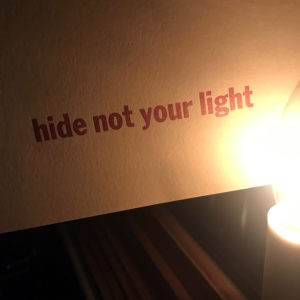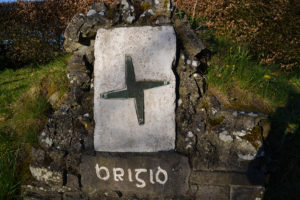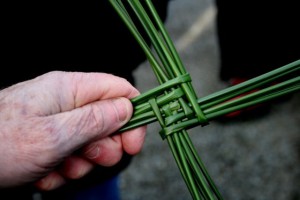Busy weekend ahead! For those of us who want a goblin-free home (and let’s face it, who doesn’t these days?), it is time to remove all remnants of yuletide greenery. This is sage household advice that comes to us from the 17th century British poet, Robert Herrick. Herrick included a poem, “Ceremony Upon Candlemas Eve,” in his book Hesperides. Here’s an excerpt:
Down with the rosemary, and so
Down with the bays and misletoe ;
Down with the holly, ivy, all,
Wherewith ye dress’d the Christmas Hall :
That so the superstitious find
No one least branch there left behind :
For look, how many leaves there be
Neglected, there (maids, trust to me)
So many goblins you shall see.
This advice was nothing new in Herrick’s day; Herrick was simply recording an old custom, one that is as good as any to follow. So if you, like us, still have a Christmas tree in your living room… well, tradition would suggest it’s time to let it go. For us, it’s been a fine Christmas season with that tree. We got it just before Christmas and didn’t get around to decorating it until Christmas night, and so it’s been no trouble at all keeping it all this time. Haden the Shop Cat loves sleeping in her kitty tower beside the tree, and chances are quite good––if we are to judge by her habits––that although the tower will remain there, once the tree is gone, she will stop sleeping in it. Cats, too, seem to have their yuletide traditions. And so on Saturday night, which is Candlemas Eve, we will pack away the ornaments for another year, and the lights, and we will bring the tree out to the garden, where it will rest for all the months to come. All through spring, summer, and fall, we will steal occasional whiffs of Christmas from it as it dries. And come next Midwinter Solstice night, we will use it as fuel for our outdoor fire to illuminate the darkest night of the year.
Ah, but already the nights grow shorter, less dark. It’s been just about six weeks since the solstice of December, and daylight in the Northern Hemisphere has been increasing a little day by day, and now we come to February and a cross quarter day in the round of the year: February 1 brings St. Brigid’s Day, and the old, mostly forgotten holiday known as Imbolc. It is the first step we take on the bridge from winter to spring, and how fitting her name, then: Brigid, as bridge. It is traditional, for her day, to fashion St. Brigid’s crosses out of rushes or straw and to leave an oat cake and butter on a window sill in your home; this, to encourage Brigid to visit your home and to bestow blessings on all who live there. She is the bridge from winter to spring but more immediately from Christmas to Candlemas, which comes on the 2nd of February. The Christmas decorations will be packed away and the greenery returned to nature, and as the sun sets on Candlemas day, it is traditional to go through the house, illuminating every lamp, even for just a little while. In many parts of Europe, crepes will be served for dinner. In Mexico, it’ll be tamales with hot chocolate, heavily infused with cinnamon.
Here in the States, perhaps the best known marker of these important days that bridge winter to spring is the groundhog who comes up from his burrow every Second of February. Candlemas is a traditional weather marker (If the sun shines bright on Candlemas Day / The half of the winter’s not yet away) and this is what survived for us, of all things. Me, I prefer the tamales and the hot chocolate and the lighting of lamps. With Candlemas, we are now forty days past Christmas. This takes us back to an old Hebrew tradition: forty days after the birth of a son, women would go to the temple to be purified. And so Mary did this, for it was her tradition, and when she did, it was there at the temple that she and her infant child ran into the elders Simeon and Anna, wise and all seeing, who recognized the child as the light of the world. This is the narrative basis for Candlemas, for the blessing of candles this day, and the connexion between the story and the celestial events that bring us closer to spring. And so here is my favorite music for Candlemas: It’s an old hymn called “Jesus, the Light of the World,” recorded by one of my favorite ensembles, the Boston Camerata. It’s from their album An American Christmas. I think of it as more a Candlemas song than a Christmas song, and it’s a fine song to sing or hum as you light all those lamps in the house and a fine album to play as the last vestiges of Christmas are stored away for yet another year. And with that, the bridge we stepped upon at the start of Christmas is behind us, as we step upon the bridge that lies ahead of us, the one Brigid lays before us, toward spring.
Image: A quickly made print, printed on the Vandercook press today, from handset metal types. More sage advice.


